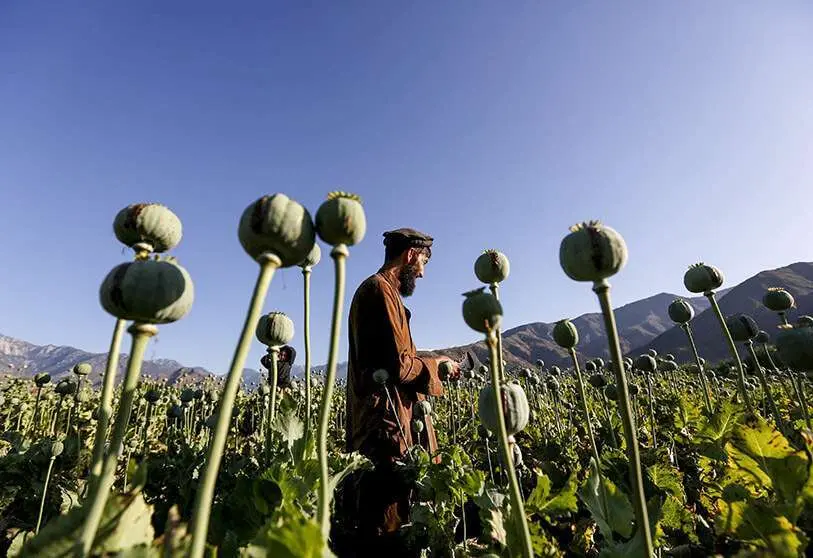The US and drugs in the Afghan wars

One of the aspects that is little discussed when talking about the war in Afghanistan was the successful policy of eradicating poppy cultivation and controlling heroin production during the Taliban's rule from 1996 to 2001.
When they came to power in 1996, after the defeat of the Soviet Union and intense warfare between different tribal groups, an estimated 82,000 hectares of poppy were planted in Afghanistan. This all changed when the regime banned the planting and production of heroin on Afghan territory with draconian measures. The area under cultivation was then reduced to 8,000 hectares.
One month after the attack on the Twin Towers in New York, the United States and its NATO allies invaded Afghanistan, overthrew the Taliban regime and brought Afghan territory under their military control. Controversially, a year after the occupation, poppy production soared from 8,000 to 75,000 hectares planted. Two decades later, the planted areas are around 328,000 hectares. Statistics show that 60% of this production is located in the Helmand Valley, where the US developed one of the most modern irrigation systems built with USAID money.
The US gamble in Afghanistan was not to consolidate a strong state and government in accordance with the historical, tribal and cultural particularities of Afghan society, but rather to consolidate a state with the vision of the West in the service of its strategic interests in Central Asia. It was its strategic interests that led to Afghanistan becoming the world's leading heroin producer within two decades. It is estimated that Afghanistan produces 95% of the world's heroin, an increase that has an explanation: it is a business controlled by networks allied to the CIA and the Pentagon, whose profits have been key to consolidating US interests in Asia and played a key role in the development of the occupation policy.

There are reports and testimonies on how the CIA transformed Afghanistan into a narco-economy and a kleptocracy with the governments of Presidents Hamid Karzai and Ashraf Ghani Ahmadzai, both elected through electoral fraud promoted by the White House. There are also reports of the involvement of members of the US military, mercenary groups and contractors involved in trafficking heroin produced in the Afghan provinces.
The Washington Post revealed that an Australian intelligence officer involved in NATO operations testified that US military convoys were being used to transport drug shipments to Pakistani ports. The Washington Post, also revealed in its instalments on the Afghanistan documents, 'The War on Truth', that the CIA's "external operations are funded from drug profits and said that "allegations that the Taliban used the heroin trade to finance their operations was a fabrication and a way to point them in the wrong direction".
Historian Alfred McCoy, in his book 'The Politics of Heroin: CIA Complicity in the Global Drug Trade', based on declassified documents, denounces the CIA's relationship with the global drug trade. The US federal government declassified files revealing CIA involvement in the drug trafficking business to finance Afghan resistance struggles against Soviet occupation.
Therefore, the links of the CIA and the Pentagon in the drug trafficking business to finance wars and conflicts in certain countries is not a new issue in US foreign policy, it was experienced in the Vietnam war, the Iran war, the Contras in Nicaragua, in Iraq, in the Caucasus, in Afghanistan in the fight against the Soviets and in the war they waged against the Taliban.

